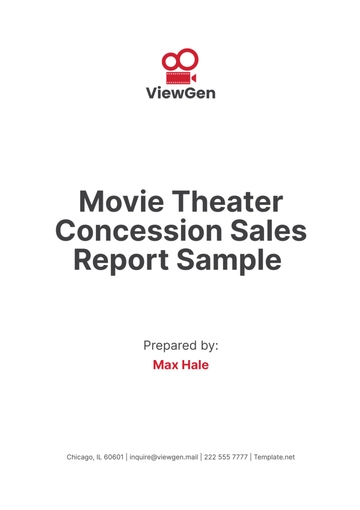Free Fashion Sales Report

I. Introduction
This Fashion Sales Report by [Your Company Name] provides an in-depth analysis of fashion sales trends for the first quarter of 2053. As the fashion industry continues to evolve rapidly, understanding market dynamics is critical for staying competitive. The report draws on data from multiple sales channels, including [Your Company Name]'s online platforms, physical retail stores, and social media-driven commerce. By examining these diverse channels, the report offers a holistic view of consumer preferences and purchasing behaviors.
The purpose of this report is to present key insights that will inform [Your Company Name]'s strategic decisions for the upcoming quarters. The findings highlight emerging trends, top-performing product categories, and areas that require improvement or innovation. This analysis will enable [Your Company Name] to align its business strategies with market demands, ensuring continued growth and customer satisfaction. Through detailed data interpretation, actionable recommendations, and adherence to industry standards, this report serves as a roadmap for achieving sustained success in the competitive fashion market.
II. Market Overview
The fashion industry has been experiencing dynamic shifts, with consumer preferences leaning increasingly towards sustainability and digital interactions. The first quarter of 2053 showed a significant increase in online transactions alongside a gradual recovery of in-store purchases post-pandemic.
A. Key Market Trends
Sustainable and eco-friendly fashion continues to drive consumer interest.
Online fashion retail saw a 15% increase in sales.
Omni-channel strategies boosted brand presence and customer engagement.
Social media platforms, particularly Instagram and TikTok, are increasingly influential in fashion marketing.
III. Sales Performance Analysis
The first quarter of 2053 demonstrated strong growth for [Your Company Name], driven by innovative strategies and diverse product lines. This section delves into overall sales performance and category-specific breakdowns, highlighting key growth areas. By analyzing these trends, [Your Company Name] can refine its focus and optimize offerings for sustained success.
A. Overall Sales Performance
The overall sales performance in the first quarter showed an upward trajectory with total revenue reaching $500 million, marking a 12% increase compared to the previous year. The rise is attributed to strategic marketing campaigns and diversified product offerings catering to various customer segments.
B. Sales by Category
Category | Sales ($ million) | Percentage Growth |
|---|---|---|
Women's Fashion | 200 | 10% |
Men's Fashion | 150 | 8% |
Accessories | 100 | 20% |
Footwear | 50 | 15% |
IV. Channel-Wise Performance
The first quarter of 2053 highlighted distinct trends across sales channels, reflecting consumer preferences and shopping behaviors. This section analyzes performance across online and brick-and-mortar platforms, showcasing how [Your Company Name] successfully leveraged digital innovation and in-store strategies to drive revenue. Understanding these dynamics is crucial for optimizing future channel strategies.
A. Online Sales
Online sales accounted for 60% of total revenue, amounting to $300 million. Enhanced user experiences on e-commerce platforms and targeted digital marketing campaigns facilitated this growth. Popular online marketplaces and direct-to-consumer websites were pivotal in reaching new customer segments.
B. Brick-and-Mortar Store Sales
Brick-and-mortar stores witnessed a resurgence with total sales of $150 million, leveraging in-store exclusive offers and personalized customer service. Consumers are gradually returning to physical stores, appreciating the tangible shopping experience and instant product acquisition.
V. Geographical Performance
The geographical analysis of first-quarter sales reveals regional trends shaping the global fashion landscape. This section examines [Your Company Name]’s performance in North America, Europe, and Asia-Pacific, highlighting market-specific preferences and growth drivers. By understanding these regional dynamics, [Your Company Name] can tailor strategies to strengthen its global market presence.
North America | North America remained the largest market with $200 million in sales, driven by demand for premium apparel and sustainable fashion choices. Retailers are focusing on localized marketing strategies to cater to diverse regional preferences. |
Europe | Europe followed with $150 million, showing a particular interest in luxury fashion and bespoke offerings. The European market is heavily influenced by cultural nuances and the adoption of ethical fashion choices. |
Asia-Pacific | Asia-Pacific markets contributed $100 million, with notable growth observed in China and India. Consumers in these regions showed a penchant for trendy and affordable fashion, facilitated by local and international brands expanding their presence. |
VI. Customer Insights
Understanding customer behavior is critical to aligning products and marketing strategies with consumer needs. This section explores key demographic trends and evolving preferences that shaped [Your Company Name]’s first-quarter performance. Insights into sustainability priorities, ethical practices, and digital engagement offer valuable guidance for fostering deeper customer loyalty and enhancing brand appeal.
A. Demographics
Youth demographics (18-35) constitute the largest consumer base.
Middle-aged consumers (35-55) are more focused on premium and sustainable products.
B. Customer Preferences
Customers increasingly prioritize quality and sustainability over price. There is a rising demand for brands that advocate ethical practices and transparency in their supply chains. Additionally, consumers favor brands with a strong social media presence and engaging digital content.
VII. Conclusion
The first quarter of 2053 showcased remarkable growth in the fashion industry, with [Your Company Name] achieving significant milestones through strategic initiatives. Digital transformation played a pivotal role, driving substantial online sales and expanding the reach to diverse customer segments. Simultaneously, a commitment to sustainability and ethical practices resonated strongly with consumers, fostering brand loyalty and enhancing [Your Company Name]'s market position. The resurgence of brick-and-mortar stores, paired with innovative in-store experiences, further demonstrated the value of an omnichannel approach in capturing consumer interest.
As the industry evolves, the focus on digital innovation, sustainability, and customer-centric strategies will remain critical for continued success. Companies should capitalize on the momentum of growing digital engagement, refine localized and personalized marketing efforts, and prioritize transparency in their supply chains to meet consumer expectations. Investments in technology to streamline operations and enhance customer experiences will also be instrumental in adapting to market shifts. By aligning with these priorities, [Your Company Name] is well-positioned to strengthen its competitive advantage, sustain growth, and capture a greater share of the global fashion market in the quarters to come.
- 100% Customizable, free editor
- Access 1 Million+ Templates, photo’s & graphics
- Download or share as a template
- Click and replace photos, graphics, text, backgrounds
- Resize, crop, AI write & more
- Access advanced editor
Track performance effectively with the Fashion Sales Report Template from Template.net. Fully editable and customizable, this template helps you present sales data, trends, and performance metrics professionally. Easily editable in our Ai Editor Tool, ensuring a seamless and organized reporting process. Enhance your decision-making with this comprehensive template.
You may also like
- Sales Report
- Daily Report
- Project Report
- Business Report
- Weekly Report
- Incident Report
- Annual Report
- Report Layout
- Report Design
- Progress Report
- Marketing Report
- Company Report
- Monthly Report
- Audit Report
- Status Report
- School Report
- Reports Hr
- Management Report
- Project Status Report
- Handover Report
- Health And Safety Report
- Restaurant Report
- Construction Report
- Research Report
- Evaluation Report
- Investigation Report
- Employee Report
- Advertising Report
- Weekly Status Report
- Project Management Report
- Finance Report
- Service Report
- Technical Report
- Meeting Report
- Quarterly Report
- Inspection Report
- Medical Report
- Test Report
- Summary Report
- Inventory Report
- Valuation Report
- Operations Report
- Payroll Report
- Training Report
- Job Report
- Case Report
- Performance Report
- Board Report
- Internal Audit Report
- Student Report
- Monthly Management Report
- Small Business Report
- Accident Report
- Call Center Report
- Activity Report
- IT and Software Report
- Internship Report
- Visit Report
- Product Report
- Book Report
- Property Report
- Recruitment Report
- University Report
- Event Report
- SEO Report
- Conference Report
- Narrative Report
- Nursing Home Report
- Preschool Report
- Call Report
- Customer Report
- Employee Incident Report
- Accomplishment Report
- Social Media Report
- Work From Home Report
- Security Report
- Damage Report
- Quality Report
- Internal Report
- Nurse Report
- Real Estate Report
- Hotel Report
- Equipment Report
- Credit Report
- Field Report
- Non Profit Report
- Maintenance Report
- News Report
- Survey Report
- Executive Report
- Law Firm Report
- Advertising Agency Report
- Interior Design Report
- Travel Agency Report
- Stock Report
- Salon Report
- Bug Report
- Workplace Report
- Action Report
- Investor Report
- Cleaning Services Report
- Consulting Report
- Freelancer Report
- Site Visit Report
- Trip Report
- Classroom Observation Report
- Vehicle Report
- Final Report
- Software Report





























